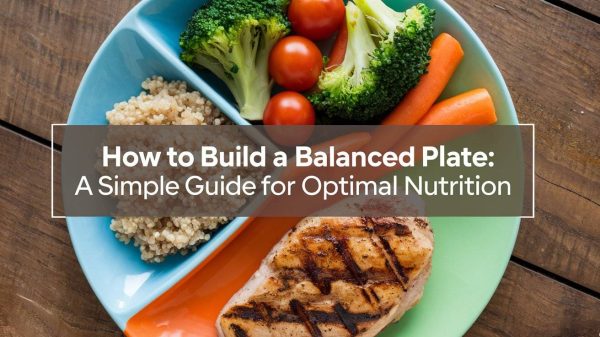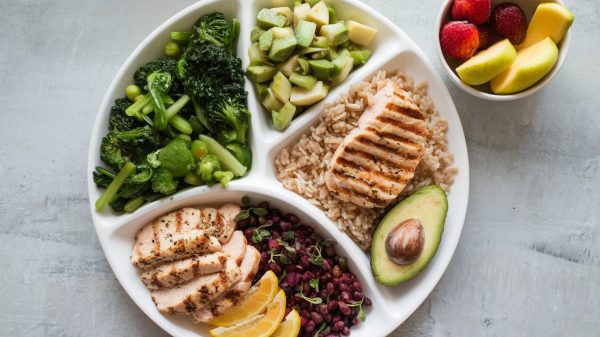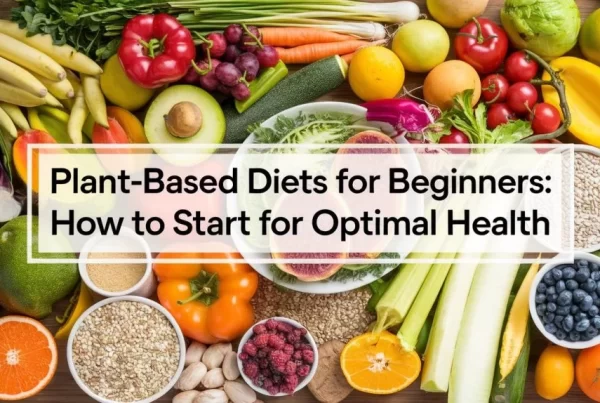The Art of Balanced Eating
In today’s fast-paced world, convenience often takes priority over nutrition. Yet learning how to build a balanced plate can transform your energy, digestion, and overall health. As a dietitian focused on functional and autoimmune wellness, I’ve seen how proper balance and portioning support weight management and chronic conditions like MS, UC, and diabetes.
What You’ll Learn in This Guide
- The exact ratios that make meals nourishing and satisfying
- How to adjust portions for weight loss, muscle gain, or autoimmune needs
- Common mistakes that disrupt balance
- Easy visual cues to perfect your plate
Let’s simplify balanced eating into real, sustainable habits.
The 5 Essential Components of a Perfectly Balanced Plate
1. The Foundation: Non-Starchy Vegetables (50% of Your Plate)
vegetables are the powerhouse of any balanced plate. They provide fiber, antioxidants, and micronutrients that keep your gut and immune system strong.
Best choices: spinach, kale, broccoli, carrots, and bell peppers. Pro Tip: Lightly sauté or roast veggies for easier digestion, especially for those with UC.
2. Quality Protein (25% of Your Plate)
Protein maintains muscle, supports metabolism, and strengthens immunity.
Best options: wild-caught salmon, organic chicken, eggs, lentils, or tofu. Avoid: oversized servings—too much protein can strain digestion.
3. Smart Carbohydrates (25% of Your Plate)
Carbs are your body’s main fuel source, but quality matters.
Choose: quinoa, sweet potato, chickpeas, or black beans. Tip: Pair carbs with fats or protein to avoid blood sugar spikes.
4. Essential Fats (1–2 Tablespoons per Meal)
Healthy fats enhance brain function and nutrient absorption.
Include: olive oil, avocado, chia seeds, or walnuts. For autoimmune health: focus on anti-inflammatory omega-3s and limit vegetable oils.
5. Flavor & Hydration Boosters
Herbs and spices make meals vibrant and healing.
Try: turmeric (anti-inflammatory), ginger (digestion aid), rosemary (antioxidant). Pair every meal with water or herbal tea to support digestion and hydration.
Also read about: Why Sleep is Non-Negotiable for Your Health
Visual Guide to Portion Sizes Without Measuring

Forget calorie counting—use this simple method:
- Vegetables: two handfuls- Protein: palm-sized portion (3–4 oz)
- Carbs: one cupped hand
- Fats: thumb-sized portion
FAQs: Your Balanced Plate Questions Answered
Q: How is this different from the MyPlate guide?
A: This approach emphasizes food quality (organic, anti-inflammatory options) and custom ratios for personal goals.
Q: Can I lose weight with this plan?
A: Yes. High-fiber and protein-rich meals naturally curb hunger and stabilize energy.
Q: How do I adjust this for autoimmune conditions?
A: Focus on cooked vegetables, gentle proteins (fish, eggs), and avoid common triggers like gluten or dairy.
Q: Should I snack between meals?
A: Ideally, balanced meals keep you full for 4–5 hours. If hungry, choose a small protein + fat combo like nuts or boiled eggs.
Sample Balanced Plates
Breakfast
– 2 eggs (protein)
– Sautéed spinach & mushrooms (vegetables)
– ½ avocado (healthy fat)
– ½ cup sweet potato (carb)
Lunch
– Grilled salmon (protein)
– Mixed greens with cucumber & tomato (vegetables)
– ⅓ cup quinoa (carb)
– Olive oil dressing (fat)
Final Thoughts: Balance Over Perfection
Building a balanced plate isn’t a diet—it’s a lifelong skill. Start small: add more vegetables, choose quality proteins, and stay consistent. Everyone’s plate looks different depending on goals and health needs. A personalized balance helps manage autoimmune conditions, maintain weight, and boost daily energy.
Ready to take the next step? Book a consultation to create your personalized balanced eating plan tailored to your health goals and lifestyle.










